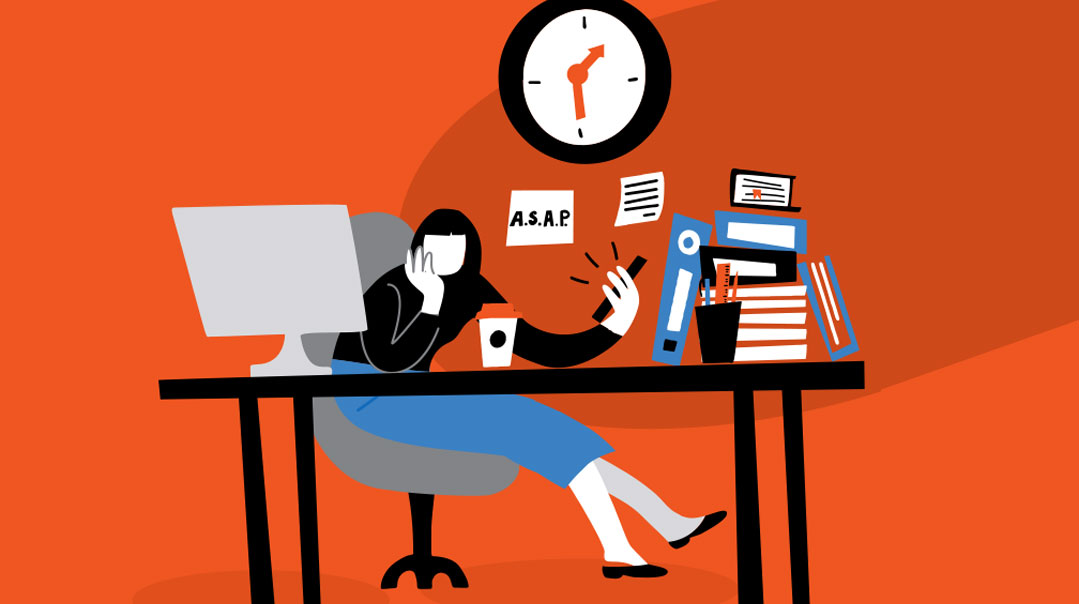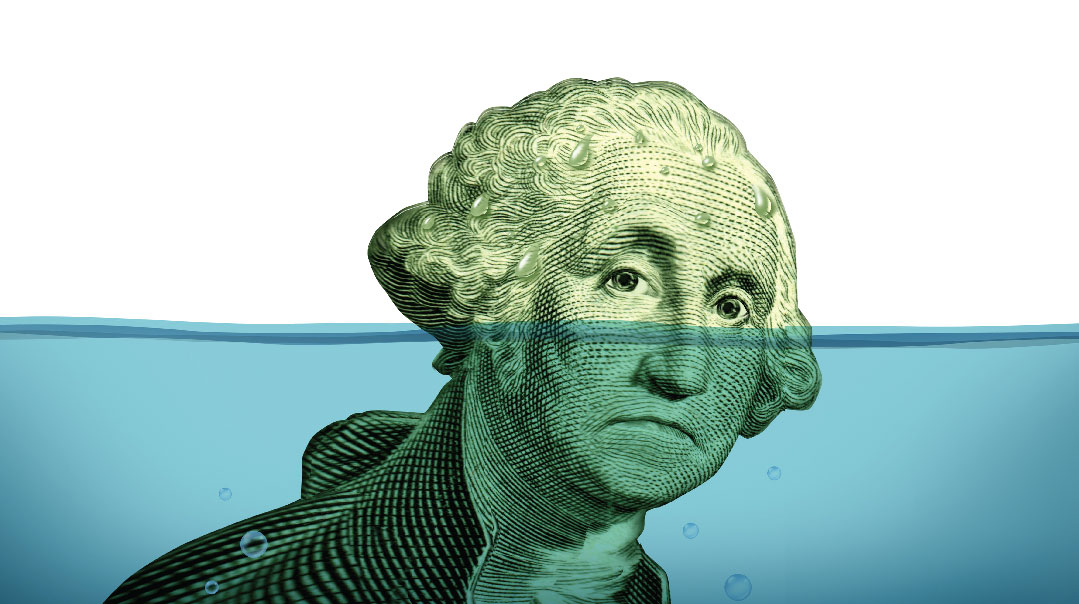What Bernie Wrought


(Photos: AFP/Imagebank)
Louie Schwartz picked up the phone at his accounting firm and heard his wife’s voice on the other end of the line. “Louie,” she said, gasping. “Louie, Bernie’s been arrested.”
Bernie was Bernie Madoff, the Wall Street titan and longtime employer of Louie’s wife. Schwartz (name changed) instantly suspected that Madoff, who was known for his volatile temper, had been arrested for a bar fight or some similar altercation. But it soon became apparent that Madoff was in much bigger trouble.
“The things that were said about him in the days and weeks afterward were just incredible,” Louie says.
Ten years ago, on December 11, 2008, Bernard Madoff made history as the world’s most notorious financial criminal. The former chairman of the Nasdaq stock exchange and an investor with a long list of admirers was exposed as a huckster running the world’s largest Ponzi scheme. When the totality of his crooked dealings were uncovered, it was revealed that approximately 10,000 investors had lost $65 billion, among them Jewish novelist Elie Wiesel, whose entire life savings were wiped out, and Yeshiva University, which lost $100 million.
One war veteran who’d fought in Afghanistan was so broken by his losses that he took his life. Others were forced to recognize that their bulging nest eggs were a mirage. Storied institutions and national organizations went from boom to bust. In the words of investigative journalist Richard Behar, it was the “9/11 of the financial world.”
So how did one man fool the entire financial world into believing that he was running a sophisticated hedge fund when he was really just depositing and withdrawing money from a Chase banking account? It all started with lax oversight at the US Securities and Exchange Commission — and a willingness to believe.
“People Are Greedy”
The modus operandi of Bernard L. Madoff Investment Securities LLC was like any other on Wall Street — make money for your clients in both good and bad times. For many years, federal investigators agree, Madoff did just that.
Born April 29, 1938, in Queens to a struggling plumber father and a mother who dabbled in stocks, Bernard Lawrence Madoff’s first love was politics, earning a bachelor’s in political science at Hofstra University. His first job was as a college lifeguard.His ambitions, though, went considerably beyond surfing the waves and staring at the blue yonder. In 1960, using some work space provided by his father-in-law and $5,000 saved from guarding the beaches, he started investing in penny stocks for a steadily growing client list. Through thick and thin, boom and bust, while Wall Street might fizzle, Bernie’s clients always came out on top.
In good times that meant Madoff, who sat on the boards of State of Israel Bonds and Yeshiva University, was delivering a 20 percent return. In bad times, a “mere” 12 percent. Those eye-popping numbers attracted a growing clientele.
“People are greedy,” Madoff told Diana Henriques, author of The Wizard of Lies, during a jailhouse interview. “I told everyone, ‘don’t put more than half of your money with me — you don’t know, I could go crazy.’”
To be sure, Madoff was investigated several times over the years. In an interview with H. David Kotz, the SEC inspector general, after his arrest Madoff wondered why it took the agency so long to catch onto his scheme.
“I was astonished. They never even looked at my stock records,” Madoff said. “If investigators had checked with the Depository Trust Company, a central securities depository, it would’ve been easy for them to see. If you’re looking at a Ponzi scheme, it’s the first thing you do.”
One dogged SEC investigator working out of Boston, Harry Markopolos, testified later that it took him three minutes to realize that Madoff’s transactions were literally at war with mathematics. It took him just one more minute to figure out it was a too-horrible-to-watch pyramid scheme that was bound to implode.
But nobody listened to Markopolos. Federal investigators, it appeared, were not even looking Madoff’s way; his reputation was sterling. He was so well regarded that trading technology his firm developed was used when the NASDAQ, today the world’s second largest stock exchange, was established, and he served as the exchange’s chairman for three years in the 1990s.
He also probably quietly enjoyed the irony when he was invited to become an active member of the National Association of Securities Dealers, the industry watchdog that existed precisely to police people such as himself.
Hard to Believe
Guy Petrillo, whose two-year term heading the criminal division of the US Attorney’s office for the Southern District of New York overlapped with the Madoff investigation, bumped into the scandal twice in his career.
As chief of the criminal division, Guy Petrillo oversaw the convictions of four cooperating witnesses in the Madoff affair, along with the 150-year sentence of Madoff himself. Madoff’s wife, Ruth, was forced to cede tens of millions of dollars of property ranging from jewelry and furs to yachts and mansions. A partner at the Petrillo Klein & Boxer law firm, Petrillo later represented a hedge fund manager whom he described as someone “who was accused of not exercising due diligence in placing money with Madoff.”
Petrillo, who has been in the news in recent weeks as the attorney for Michael Cohen, the former personal lawyer for Donald Trump, told Mishpacha that when the Madoff case arrived at the US Attorney’s office, even seasoned prosecutors had a hard time believing that one man had perpetrated such a sprawling crime.
“I think there was an astonishment at the size and the duration of the offense,” he said, “and the willingness of large numbers of very sophisticated parties to turn over sizable amounts of funds to an investment program that turned out to be completely fictitious.”
Another eye-popping detail for the law enforcement agents was that Madoff had completed several industry inspections, which “did not yield evidence of any significant problems,” said Petrillo. The circus was completed by the discovery that Madoff’s niece, Shana Madoff, who served as his firm’s compliance officer, was married to Eric Swanson, a former assistant director of the SEC’s Office of Compliance Investigations and Examinations. Madoff, in essence, was employing the person who was married to the person charged with uncovering his fraud.
Stunning Fall
A decade on, Petrillo says, prosecutors have managed to deconstruct what went on in the Lipstick Tower on the 17th floor.
“The Southern District now does [know],” he said. “They continued to work on the matter for years and they’ve worked with insiders who provided information — they’ve brought a trial against insiders. I think they have a strong sense of the facts.”
Madoff was an obsessive control freak who devoted an entire floor to his secret. Traders worked on the 19th floor of the Lipstick Building, software engineers were on the 18th floor, but no one, heaven forbid, was permitted to step foot on the 17th floor.
Not that there was much to see on that floor anyhow. It contained an antiquated IBM device kindly termed a computer by its users, and a staff of some 20 people.
Bernie even kept his sons in the dark, refusing their repeated entreaties to unravel his dealings. “You do your thing and I’ll do mine,” he growled, according to Andrew, who spoke to NBC in 2014 in his one and only interview.
Sometime in the 1980s, prosecutors suspect — though Madoff insisted it happened not before 1991 or 1992 — he turned from businessman to villain. Rather than taking Peter’s money and investing it further, he took most of it for himself and used the rest to pay out dividends to Paul.
That, according to the U.S. Securities and Exchange Commission, is a classic Ponzi scheme.
“A Ponzi scheme is an investment fraud that involves the payment of purported returns to existing investors from funds contributed by new investors,” the SEC explains on its website. “Ponzi scheme organizers often solicit new investors by promising to invest funds in opportunities claimed to generate high returns with little or no risk. In many Ponzi schemes, the fraudsters focus on attracting new money to make promised payments to earlier-stage investors to create the false appearance that investors are profiting from a legitimate business.”
Madoff used the money to fund an elaborately lavish lifestyle, with villas on a beachfront in the Hamptons, in sunny Palm Beach, and in France; a flotilla of yachts dotting the globe; and two jets he co-owned with friends.
With Madoff’s newfound wealth, however, came a growing surreptitiousness that unnerved even his employees. He devoted office space to mysterious businesses, chose only family members for top management positions, and installed cameras in the London branch of his firm, which he viewed from his office in Manhattan.
Philip Toop, the firm’s head of trading, recalled how Madoff “carried micromanagement to a new level.”
On Toop’s first day at the office, he said during Madoff’s trial, he had brought a pear for lunch.
“Something fell from the pear onto the floor,” Toop testified, “and he came out of his office and said, ‘What is this?’ And he ripped up the carpet tile that the pear juice had spilt onto, he went to a closet that was right behind where the trader I worked for, Marty Joel, sat, and he got a fresh carpet tile out, put it back into the floor and said ‘Wear it in’ and walked back into his office.”
Most of all, Madoff controlled every last function in his office’s secret wing. He sweated the details. It would be funny if it weren’t sad, recalled Frank DiPascali, his ex-finance chief, in his trial testimony, how Madoff would insist on changing the font or typeface of a statement recording a fraudulent transaction. On a whim he would decide how much dividend each depositor had “earned” on his or her “investment.”
But even these idiosyncrasies became par for the course among his staff. They tiptoed around when he erupted in rage, did their best to bring in accounts on the legitimate side of the business, and, most importantly, did not question the books.
And why not? Life was good. Stating that you were a Madoff employee gained you entrance into high society on both the social and philanthropic scenes.
And then came the Great Recession. Like a low tide that exposes the ocean floor, the sudden dearth of cash exposed Madoff’s fraud. Trillions of dollars that had been invested in the red-hot subprime housing market was now lost. Investment banks Lehman Brothers and Bear Stearns folded when the market’s bottom opened in September of 2008. Desperate investors demanded their money back.
Madoff was a master tactician, but he could beat the markets for just so long. He would deposit all money that he received into his regular Chase banking account, and withdraw funds when investors asked for their money in return. That worked for several million dollars at a time, but not when hundreds of clients were asking for a collective $7 billion in life savings.
The noose was tightening around Madoff. It was the end of the game. He would walk into his office in the morning and, hands on his chin, stare at the ceiling the entire day. He confided to his son, Mark, in November that he needed to pay $105 million to investors. His Chase account only held $13 million.
Madoff survived that challenge by moving money from his legitimate business to the Ponzi account. He even managed to deliver one last dividend, a 4.5 percent return, for his “investors.” But it was clear that the end was near.
Madoff always expected that he would need about a week to settle his affairs once his hand was played. The end came even quicker than that.
One Big Lie
On December 10, Madoff suggested to his sons that they use the remaining money in the account to give annual bonuses to employees two months ahead of schedule. Aware that investors wanted their money back, Mark and Andrew protested, saying that investors should come first.
It was then that Madoff called his wife of 50 years, Ruth, and said he would be coming home with the two boys.
“It’s all one big lie,” Madoff told his family, according to Stephanie Madoff Mack, Mark’s wife. “Bernie betrayed no emotion or remorse, calmly delivering his bombshell with the cool demeanor of an anchorman reading a wire report on the evening news,” Mack writes in her book, The End of Normal. “When he was done, he began to cry.”
Bernie told his wife and kids that he intended to turn himself into police in a week but first wanted to ensure that Ruth was financially secure and that pivotal investors got their money back.
Even that was not granted him. A disgusted Mark and Andrew turned their father in the next day. Over the course of a few months, he was arrested, declined to cooperate with police in untangling his financial lies, pleaded guilty, and was sentenced to 150 years in prison.
A Bitter Aftermath
Bernie Madoff, the grandchild of Jewish immigrants from Europe, lived the American dream. But his life ended in an American nightmare.
Ten years after his name became synonymous with unspeakable greed and cruelty, Madoff’s family — or what’s left of it — wants to have nothing to do with him. His wife, Ruth, lives simply in a tiny Connecticut apartment, shopping at local pharmacies and wearing modest clothes. She must have every purchase above $100 approved by the government. Their two sons are dead — Mark by suicide in 2010 and Andrew to cancer in 2014.
Today, prisoner #61727-054 is on his tenth year in Butner Federal Correctional Complex in North Carolina, where he earns $40 a month doing prison labor. His release date is set for Nov. 14, 2139 — conditional on good behavior and an extraordinary longevity.
His firm was handed over to a federal trustee, Irving Picard, whose job is to recover whatever money he can find. The Madoff Victim Fund he established has recovered more than $13 billion, three-quarters of the $17.5 billion in principle investment that was lost.
According to an article that appeared earlier this month on Law360.com, Picard has led the “most far-reaching, historic, and successful recovery initiative in American history.”
Madoff started out in life with $5,000 and a dream. He is ending it in a prison cell, a world away from his Lexington Avenue penthouse.
“Somehow, I assumed it would work out,” he told a biographer, speaking from prison. “It was almost like — it sounds horrible to say it now — but I just wanted the world to come to an end.” —
Can a Madoff Happen Again?
The short answer is, of course it can. There will always be criminals looking to make a quick buck. But the chances of a Bernie Madoff II are less likely than a decade ago.
Post-Madoff, regulations have been enacted that encourage financial advisors not to park their clients’ money in their own hedge funds to avoid a conflict of interest. In addition, laws protecting whistleblowers were passed. So, for example, today’s Madoff would be subjected to frequent audits, surprise checks, and tedious paperwork if he were to invest clients’ funds in the Bernard L. Madoff Investment Securities LLC.
There are many lessons to soak in from the Madoff scandal. For one, investors must perform their own diligence. It is not enough to rely on the fund’s reputation or even record of delivering high returns. To the contrary, real funds deliver better dividends in good times and worse in bad.
Secondly, don’t be intimidated from asking hard questions or paying attention to red flags. Keep a healthy skepticism of “exclusive” investment pitches or “guaranteed” returns.
It’s not enough to Google investment companies or know someone working there. There are just so many variables that make the difference between a Madoff and a legitimate investor.
Guy Petrillo says that investors who perform due diligence have a better chance today of succeeding in the financial markets. “I think that among the high investors, among the institutional money sectors, there’s a lot less availability of access [to investment funds] by someone like Madoff — because of the Madoff scandal.”
“I still think it’s possible to conduct a Madoff-like scheme,” he added, “just not on that size.”
(Originally featured in Mishpacha, Issue 740)
Oops! We could not locate your form.













